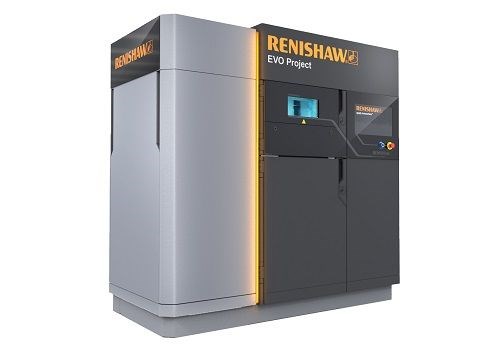Renishaw to Introduce Additive Manufacturing System Aimed at Production
The first machine developed in-house by the company features a high-power laser and automation for industrial production via additive manufacturing.

Renishaw has announced that it is developing a new additive manufacturing system designed and engineered specifically for production manufacturing. The machine, which the company has provisionally named the “EVO Project,” includes a 500-W laser, high-capacity filtration and automated powder handling.
Renishaw became an additive manufacturing OEM through acquisition in 2011. Now, this new machine will be the first the company has designed and engineered in-house, drawing on its own knowledge and background in production manufacturing. The new machine does not replace the Renishaw AM250 system, the company says, as this existing machine remains better suited for flexible manufacturing and research applications in which changes between materials are a requirement.
The new machine, by contrast, is designed for single-material industrial production. Powder handling is said to be almost entirely hands-off, while powder recirculation, recycling and recovery are all carried out within the inert atmosphere of the system.
Renishaw plans for the new machine to be available during the second half of 2015. Learn more here.
Related Content
-
Savage Automation Delivers 3D Printed Commercial Manufacturing Aids
The company's approach to designing end-of-arm tooling and other devices has evolved over the years to support longevity and repairs.
-
DMG MORI: Build Plate “Pucks” Cut Postprocessing Time by 80%
For spinal implants and other small 3D printed parts made through laser powder bed fusion, separate clampable units resting within the build plate provide for easy transfer to a CNC lathe.
-
Video: 3D Printed Tooling Eases Cobot Integration
At NPE 2024, Universal Robots and EMI Corporation highlighted how 3D printed end effectors, fixtures and more enable adoption of collaborative robots.











